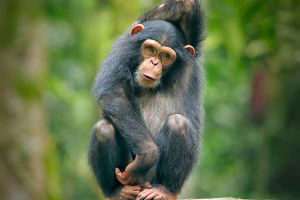Have you ever been amazed when a parrot repeats a phrase perfectly, sounding almost human? It's tempting to think these colorful birds actually understand what they say.
But is it just clever mimicry, or is there more to their "talking" than meets the ear? Let's explore the fascinating science behind how parrots produce speech and what it really means.
The Art of Mimicry: How Parrots Copy Sounds
Parrots belong to a special group of birds called vocal learners. Unlike most animals that produce fixed calls, vocal learners can imitate a wide variety of sounds, including human speech.
Why mimicry? Survival and social bonding
In the wild, parrots use their vocal skills to fit in with their flock, copying calls to build social bonds or establish territory. This ability to imitate sounds is a survival skill honed over thousands of years.
When parrots "talk" to humans, they are essentially applying the same skill—reproducing the sounds they hear around them, whether it's a human voice, a phone ringing, or a dog barking. Their syrinx is highly flexible, allowing them to mimic the pitch and tone of human speech quite accurately.
Is It Just Noise? The Question of Understanding
Here's where things get intriguing. Many people assume parrots understand the meaning behind the words they say, but research shows the picture is more complex.
Repetition vs. comprehension
Most parrots primarily learn words and phrases through repetition and conditioning. They may associate certain sounds with specific outcomes, like saying "hello" when someone enters the room or "bye-bye" when a person leaves.
Signs of deeper cognition
However, some studies, notably those involving famous parrots like Alex, suggest a higher level of understanding. Alex was able to identify colors, shapes, and numbers and used words appropriately to express desires or answer questions. This indicates some parrots can go beyond mimicry and develop a functional use of language.
The Role of Intelligence and Social Interaction
Parrots are among the most intelligent birds, with problem-solving skills and social behaviors comparable to primates. Their ability to "talk" is closely tied to their social nature.
Communication is key
In the wild, vocalizations help maintain flock cohesion and warn of danger. When interacting with humans, parrots seem to transfer these social skills to form bonds, which may explain why they pick up words and sounds that get attention or positive reactions.
Learning through interaction
Parrots are more likely to use words correctly if they are actively engaged in social interaction. For example, a parrot might learn to say "good morning" to greet its owner because it receives a positive response, not because it understands the phrase like a human does.
Implications for Parrot Owners
Understanding the difference between mimicry and comprehension can help us communicate better with our feathered friends.
Patience and context matter
Reinforcing words with actions and consistent context helps parrots make associations. For instance, saying "step up" while offering your hand encourages them to learn commands meaningfully.
Respecting their intelligence
Recognizing that parrots are intelligent social beings means providing them with mental stimulation and social interaction beyond just teaching words.
The next time you hear a parrot chatting away, think about the layers behind those words. Are they just echoing sounds, or are they trying to connect with you? While they may not fully grasp human language like we do, their mimicry combined with social intelligence makes them some of the most fascinating communicators in the animal world.
Have you had a talking parrot or witnessed one's surprising use of words? What did you think they understood? Share your stories—these remarkable birds never cease to amaze!


